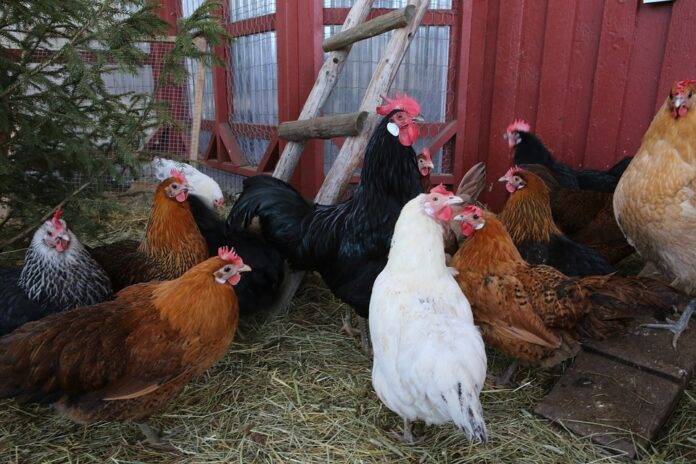Introduction
The global poultry industry is a significant sector within the agricultural and food production landscape, valued at approximately USD 268 billion in 2023. This industry is influenced by several international trade agreements that facilitate the exchange of poultry products across borders. These agreements play a crucial role in shaping market dynamics, affecting prices, production volumes, and consumption patterns globally. This report delves into the top 10 poultry trade agreements that have a substantial impact on global markets, analyzing their implications, financial data, and trade volumes.
1. North American Free Trade Agreement (NAFTA)
NAFTA, implemented in 1994, was a trilateral trade agreement between the United States, Canada, and Mexico. It significantly reduced trade barriers and tariffs in the poultry sector. In 2022, poultry exports from the U.S. to Mexico reached approximately USD 1.3 billion, showcasing the importance of this agreement in enhancing cross-border trade. The agreement allowed for tariff-free access, which resulted in a 20% increase in U.S. chicken exports to Canada and Mexico over a five-year period.
2. European Union Common Agricultural Policy (CAP)
The CAP is a comprehensive policy framework that guides the European Union’s agricultural production, including poultry. The CAP provides subsidies and supports to EU farmers, affecting competitive pricing and production volumes. In 2023, EU poultry production was estimated at 13.5 million tonnes, with an export value of around USD 4.5 billion. The CAP plays a crucial role in ensuring food security and stabilizing markets within the EU, influencing global poultry prices.
3. Comprehensive and Progressive Agreement for Trans-Pacific Partnership (CPTPP)
The CPTPP, which includes 11 member countries, aims to promote trade and investment among its members. The agreement has provisions that reduce tariffs on poultry products. For instance, Japan and Canada significantly benefited, with Canada increasing its poultry exports to Japan by 30% post-agreement. In 2022, CPTPP countries accounted for 25% of global poultry trade, highlighting its impact on market dynamics.
4. Regional Comprehensive Economic Partnership (RCEP)
The RCEP, signed in 2020, is the largest trade agreement globally, encompassing 15 Asia-Pacific countries. It aims to lower tariffs and streamline customs procedures. Following its implementation, Australia saw a 15% increase in poultry exports to China, resulting in a revenue boost of USD 400 million. This agreement is expected to reshape the poultry market in the Asia-Pacific region significantly.
5. African Continental Free Trade Area (AfCFTA)
The AfCFTA, launched in 2021, aims to enhance intra-African trade. Poultry trade among African nations has been historically limited due to high tariffs and trade barriers. With the AfCFTA, it is projected that poultry trade will increase by 30% by 2025. Countries like South Africa and Egypt are expected to dominate poultry exports within the continent, with the market value estimated to reach USD 1.5 billion annually.
6. United States-Mexico-Canada Agreement (USMCA)
Replacing NAFTA in 2020, the USMCA continues to provide tariff-free access for poultry products among the three countries. In 2022, U.S. poultry exports to Canada and Mexico were valued at USD 1.5 billion, reflecting the agreement’s effectiveness. The USMCA also addresses sanitary and phytosanitary measures, ensuring that poultry products meet health standards, which further facilitates trade.
7. EU-Mercosur Trade Agreement
The EU-Mercosur agreement, signed in 2019 but not yet ratified, aims to enhance trade between the European Union and Mercosur countries (Argentina, Brazil, Paraguay, and Uruguay). The agreement could lead to a potential increase in poultry exports from Mercosur to the EU, as Brazil is one of the largest poultry producers globally. The EU’s poultry market, valued at USD 90 billion, could see a significant influx of South American poultry products, potentially lowering prices for consumers.
8. China-ASEAN Free Trade Area (CAFTA)
The CAFTA, established in 2010, facilitates trade between China and ASEAN member states. China is a significant importer of poultry, and the agreement has led to a reduction in tariffs, increasing poultry imports from ASEAN countries by 25% in the last three years. In 2022, ASEAN poultry exports to China were valued at approximately USD 2 billion, demonstrating the impact of CAFTA on trade volumes.
9. African Growth and Opportunity Act (AGOA)
The AGOA, enacted in 2000, allows eligible sub-Saharan African countries to export goods to the United States duty-free, including poultry products. In 2022, U.S. imports of poultry from AGOA-eligible countries reached USD 300 million, with countries like Namibia and South Africa being significant exporters. The AGOA has enhanced poultry production in these regions, fostering economic growth and job creation.
10. Asia-Pacific Trade Agreement (APTA)
The APTA, which includes countries like India, China, and South Korea, aims to promote trade through tariff reductions. The poultry sector has seen increased trade flows, particularly from India to other APTA member countries. In 2022, India exported poultry worth USD 150 million under APTA, highlighting the agreement’s role in enhancing regional trade.
Conclusion
The aforementioned trade agreements play vital roles in shaping the global poultry market. They facilitate international trade by reducing tariffs, enhancing market access, and promoting economic cooperation among nations. As the poultry industry continues to evolve, these agreements will remain essential in influencing production volumes, prices, and consumption patterns worldwide. Stakeholders within the industry must remain informed about these agreements to navigate the complexities of international trade effectively.
[Read More: Global Poultry Industry Report 2025: Trends, Challenges, and Future Outlook Across the Value Chain]




